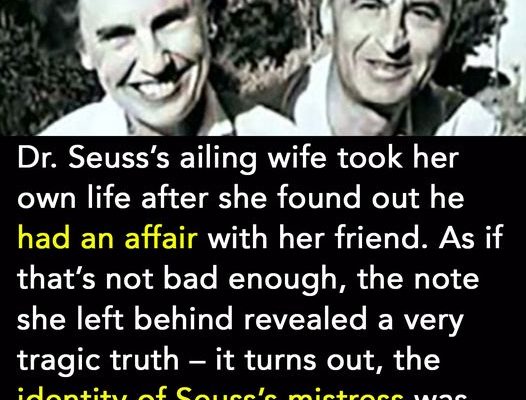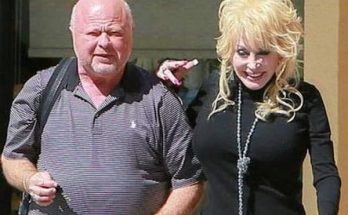The whimsical genius behind beloved classics like The Cat in the Hat and Green Eggs and Ham enchanted generations with his imaginative illustrations and rhythmic tales.
But I had no idea that there was a very dark chapter in his life — a chapter that involves words like ”infidelity” and ”suicide.”

Whether you know who Dr. Seuss is or not, chances are you’ve encountered his books or illustrations. For older generations, he’s a beloved icon, while younger readers might recognize him primarily as the creator of the mischievous Grinch.
When we look at the actual numbers, there’s no doubt: Dr. Seuss stands as one of the most significant children’s authors in the English-speaking world. He wrote and illustrated over 60 books during his lifetime, which sold a staggering 600 million copies and were translated into 45 languages.
Dr. Seuss, whose real name was Theodor Geisel, penned classics that continue to influence popular culture today. However, in recent years, some of his books have been withdrawn from publication. In 2021, Dr. Seuss Enterprises announced that six of his books would no longer be published due to their racist content. The titles contained caricatures of Asians and people of color, along with stereotypical depictions that have been criticized for their racism.

This decision sparked intense debate and controversy, marking yet another instance where Dr. Seuss found himself in the spotlight for less-than-desirable reasons. If we delve into the legendary author’s private life, there’s a dark chapter that many are unaware of.
Dr. Seuss first wife
The story began when Ted Geisel, born in Massachusetts, started studying at Oxford in the UK. At that time, Geisel aspired to become an English professor, despite already showing remarkable talent as a illustrator and writer.
In England, Geisel met his future wife, Helen Palmer, who would have a significant impact on him. She was six years older than him.
Helen, raised in the affluent Bedford-Stuyvesant neighborhood of Brooklyn, was diligent in her studies and had ambitious goals. When she met Geisel, she encouraged him to abandon his plans of becoming an English professor and instead pursue a career as an illustrator.

”Ted’s notebooks were always filled with these fabulous animals. So I set to work diverting him; here was a man who could draw such pictures; he should be earning a living doing that,” Helen later recalled.
Geisel returned to the USA in 1927 and married Helen in New York. Life seemed promising, but soon dark clouds gathered. The Great Depression hit with full force, and making a living as an illustrator and writer became exceedingly difficult. Geisel wrote two-line gags for Judge and Life, and he was paid in due bills, not dollars.
Helen couldn’t have children due to medical issues, but she and Geisel remained a strong team. When Dr. Seuss was asked how he managed to connect with children despite not having any of his own, he would respond with his signature line:
“You have ‘em, and I’ll entertain ‘em.”
Helen and Geisel worked together closely, and she followed her husband when he got a job in Hollywood. When the documentary Design for Death won the 1947 Academy Award for Best Documentary Feature, Helen was credited as a co-writer alongside Geisel.
Years of pain
During the 1950s, Helen continued to work closely with her husband. She did everything for Geisel, who could be difficult to live with at times. Despite the wealth his children’s books had brought him, he refused to switch to an electric typewriter, deeming it “too sophisticated.” Helen joked that when her husband wasn’t working, he indulged in his “only two extravagances”: chain-smoking cigarettes and arranging rocks in his desert garden.
Helen managed the financial matters, which bored him, and organized dinner parties, which exhausted him. According to the biography Dr. Seuss & Mr. Geisel, she handled all the shopping, and when publishers suggested book tours or interviews, only Helen could persuade the reluctant author to leave his tower.
At the same time, she also worked on several of her own books.

Helen also co-founded the “Beginner Books” imprint — you might recognize the Cat in the Hat logo — in 1957. She is said to have been the driving force behind many of Geisel’s works, though she never received full credit for it.
The close collaboration persisted until Helen began to experience significant health issues. While Geisel was at the height of his professional career, his marriage was facing turmoil. Helen had developed Guillain-Barré Syndrome, a rare autoimmune condition where the immune system attacks the nerves, leading to numbness and muscle weakness.
The last dozen years of Helen Geisel’s life were marked by pain, with her symptoms also including partial paralysis.
Helen’s last words
After suffering through her pain for more than a decade, Helen reached a breaking point. The burden became too much, and she began to consider ending her life.
At the same time, Geisel had grown distant from his wife and allegedly began an affair with a family friend, Audrey Stone Dimond, who was also married with two daughters
Depressed and likely troubled by the suspicions of her husband’s affair, Helen made the heartbreaking decision to end her life. She died by suicide with an overdose of barbiturates on October 23, 1967.
A letter addressed to her husband was found near her lifeless body:
Dear Ted, What has happened to us? I don’t know. I feel myself in a spiral, going down down down, into a black hole from which there is no escape, no brightness. And loud in my ears from every side I hear, “failure, failure, failure…” I love you so much … I am too old and enmeshed in everything you do and are, that I cannot conceive of life without you … My going will leave quite a rumor but you can say I was overworked and overwrought. Your reputation with your friends and fans will not be harmed … Sometimes think of the fun we had all thru the years ..

Seuss later described his despair after Helen’s death:
”I didn’t know whether to kill myself, burn the house down, or just disappear and get lost,” he said, according to the book Dr. Seuss & Mr. Geisel.
Geisel’s niece, Peggy, remarked, ”Whatever Helen did, she did it out of absolute love for Ted.” Meanwhile, secretary Julie Olfe described Palmer’s death as ”her last and greatest gift to him.”
Inside the affair
Eight months after Helen’s death, in August 1968, Geisel married Audrey Dimond, who was 18 years his junior. The couple exchanged vows at the Washoe County Courthouse in Reno, Nevada, with no friends in attendance. Instead of a traditional celebration, Dr. Seuss broke the news by sending a letter to his friends.
”Audrey and I are going to be married […] I am acquiring two daughters, aged nine and fourteen. I am rebuilding the house to take care of the influx. I am 64 years old. I am marrying a woman eighteen years younger… I have not flipped my lid. This is not a sudden nutty decision… This is an inevitable, inescapable conclusion […] All I can ask you is to try to believe in me.”
Audrey first met Geisel and his wife, Helen Palmer, at a party in La Jolla, the scenic seaside neighborhood of San Diego. Even then, there was an undeniable spark between them, a connection that would later grow into a full-blown love affair.
While Helen was gravely ill, Geisel found solace in Audrey.
”The feeling was that at his age you grab for the gusto. You don’t wait. You don’t think you have that much time,” Audrey later reflected.

Helen’s tragic suicide also cast a long shadow over their new life together, rippling through the close-knit community of La Jolla. It left ‘a rather large ripple’ among neighbors and friends. Audrey also had to divorce her husband to marry Geisel, and in the process, her daughters, then 9 and 14, were sent away to school.
”They wouldn’t have been happy with Ted, and Ted wouldn’t have been happy with them,” she candidly told The New York Times in 2000.
Like Helen, Audrey was deeply invested in her husband’s work. In fact, Geisel’s books took on a new direction after Audrey pointed out that he was now writing for humanity, not just for children.
In the later years of Geisel’s life, Audrey took on the dual role of wife and personal assistant. When Geisel began losing his vision due to glaucoma in 1975, she became his ‘eyes’ and ‘driver’ Audrey even took charge of his appearance.
”I created the beard. He had a nose that was looking for a beard all his life,” Audrey told The New York Times.
Dr. Seuss cause of death
By the late 1980s, Geisel’s health began to deteriorate significantly. The beloved children’s book author was diagnosed with a brain tumor.
Although doctors successfully removed the brain tumor, Geisel faced several more years of grueling treatments.

Despite undergoing extensive radiation and chemotherapy for palate cancer over the past nine years, he still lost part of his jaw to the disease. In the final weeks of his life, as his health declined due to multiple ailments, he was forced to communicate more through scrawled notes on paper.
Theodor Geisel passed away on September 24, 1991, at his home in La Jolla. He was at 87.
A family spokeswoman announced that there would be no funeral services and that Geisel’s remains were to be cremated. His ashes were later scattered in the Pacific Ocean.
Dr. Seuss last words
As previously mentioned, during his final days, Geisel could mostly communicate through short notes. His last words were related to his work on an oral history of his life. A close friend, Neil Morgan, who had been collaborating on this project, visited Geisel on his deathbed to see if Dr. Seuss had any final additions now that the work was nearly complete.

According to Morgan, Geisel smiled and said, ‘Let me think about it.’ He then penned down some words on a yellow piece of paper:
”Whenever things go a bit sour, in a job I’m doing, I always tell myself, ’You can do better than this.’. The best slogan I can think of to leave with the U.S.A would be, ’We can… and we’ve got to… do better than his”.
It’s worth noting that Geisel was generally liberal or progressive in his politics, with many of his books reflecting themes of environmentalism, anti-war sentiment, and social justice.
Audrey Geisel’s death
After Geisel’s death, Audrey realized the need to protect her husband’s name and legacy. She founded Dr. Seuss Enterprises and took on the role of CEO. In this capacity, she served as executive producer for the animated adaptations of several of Seuss’s books.
Following her husband’s passing, Audrey donated many of his letters, original drawings, manuscripts, and other materials to create a special collection. This collection, consisting of over 20,000 items, is preserved in what is now known as the Geisel Library at the University of California, San Diego.
Audrey was described as an energetic presence who could light up a room. Her vibrant spirit was believed to have infused Ted’s work, reflecting her relentless advocacy for his books and their publishing.
She passed away ”peacefully” on December 19, 2018, at her home in La Jolla, California. She was 97.

Theodor Geisel’s life story, books and legacy will undoubtedly endure for many years to come. His contributions to literature and the imaginative worlds he created have left an indelible mark on countless readers.
Yet, like many of us, his private life was far from perfect, revealing the complexities and struggles that are a part of the human experience.
Understanding both his remarkable achievements and personal challenges offers a more complete picture of the man behind the stories. If you found this exploration of Geisel’s life intriguing, please share it with others.



